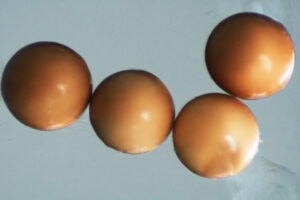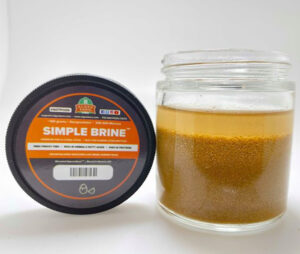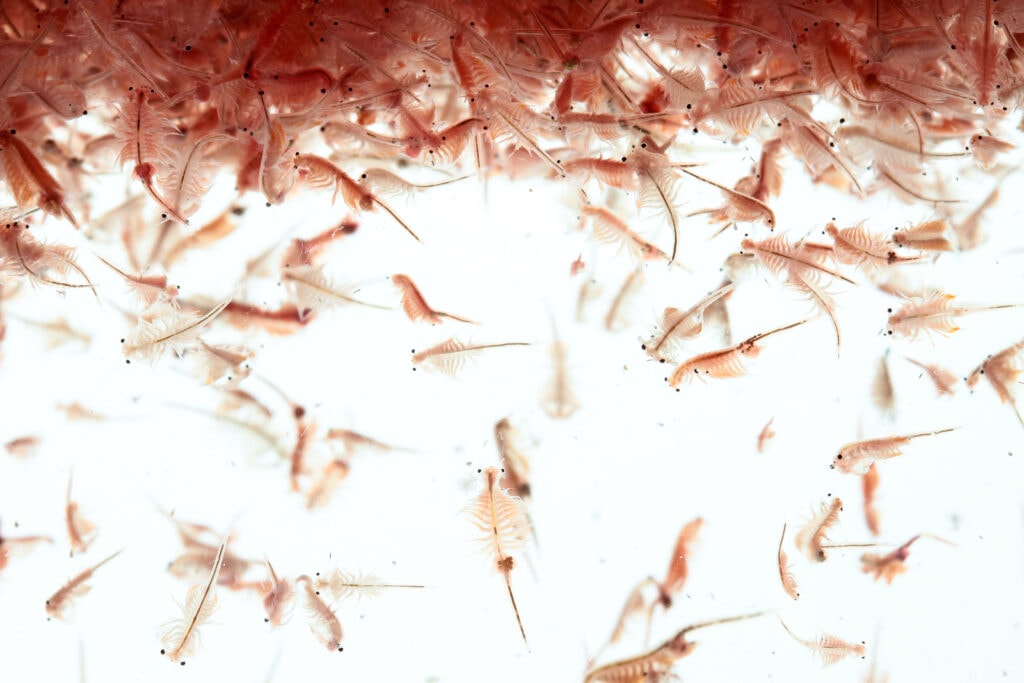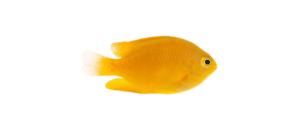For about a century, brine shrimp (Artemia spp.) have been among the most important of all aquarium foods. Not only are they extremely nutritious, and fish love them, but they are also incredibly convenient to use. This is because it is relatively simple to store and hatch their cysts.
 Cysts are unlike eggs in that they do not hatch until environmental conditions are favorable for the hatchling’s survival. Thus, they do not hatch–but nevertheless remain viable–under poor conditions. Brine shrimp cysts are capable of tolerating some pretty rugged conditions, including hypersalinity, extreme temperatures or even complete desiccation.
Cysts are unlike eggs in that they do not hatch until environmental conditions are favorable for the hatchling’s survival. Thus, they do not hatch–but nevertheless remain viable–under poor conditions. Brine shrimp cysts are capable of tolerating some pretty rugged conditions, including hypersalinity, extreme temperatures or even complete desiccation.
One problem, with the use of cysts in aquaria, however, is that they are maybe a bit too tough. This presents a wide variety of issues. For example, the young shrimp wastes a considerable amount of energy (in the form of its nutritious yolk sac) in order to break free during hatching. Also, the cyst shell (i.e. capsule) fragments are tough and practically indigestible; thus, they can cause choking or intestinal blockages when consumed by some animals. Worse yet, the capsule surface can harbor potentially harmful microbes.
Decapsulated cysts solve all of these issues. Decapsulation is a process that essentially dissolves away the capsule, leaving the tiny embryo intact and viable. Sure, there are some minor downsides to decapsulated cysts; they can’t be stored dry and must be refrigerated. That however is an arguably tiny price to pay for a product that is much better for your prized livestock in terms of palatability, nutrition and safety. And it’s why AlgaeBarn is proud to offer Simple Brine!
Yes, Simple Brine (like most decapsulated Artemia cysts) can easily be hatched out in a so-called brine shrimp hatching cone. But you can really appreciate its benefits by adding it directly to the tank. Yes, this product is in some ways more convenient than dry cysts in that you may skip the hatcher and put it right into your system! This allows for three really awesome hacks. Try one of them, or two… Or try them all!
As they are
Many reef animals release their eggs into the plankton, and many other animals readily consume these floating eggs whenever they can. In this respect, Simple Brine is a very naturalistic substitute for this valuable food source. Indeed, it is so tasty and palatable that many corals and small fish eagerly rip the unhatched decapsulated cysts right out of the water column. And note that since the embryonic shrimp haven’t spent any energy hatching, the unhatched live cysts are about as wholesome as brine shrimp can possibly be.
Just remember here that a little bit goes a very long way. To facilitate feeding, it is best to mix the cysts into a cup of tank water; you can then pour them out slowly, in smaller increments and in a more controlled manner overall. This particular method works well for feeding reef planktivores such as small wrasses, firefish, Chromis, and many SPS corals. Especially when mixed with the uber-nourishing fresh fish eggs in Dragon Roe!
A little of that
Everyone’s reef tank is a little different. That’s why everyone’s feeding regimen varies somewhat. Some hobbyists are so hardcore about foods and feeding (they should be!) that they take on the extra work of making their own specially formulated foods at home.
Most often, these are frozen foods made with gel binders. These recipes allow for most anything to be added, including Simple Brine. While Simple Brine is quite nutritious on its own, it can certainly be used to spice up anyone’s specialty food mixture. In fact, this is an excellent way to include the rich fatty acids of unhatched Artemia in the diets of larger reef fishes; even huge fish like groupers will eat the miniscule cysts if you sneak them into a big, fat, juicy frozen cube with chopped meaty items.
Ghost feeding
 Once placed in a suitable environment, brine shrimp cysts hatch in about one day. This can be a pain when you want and need live food now. However, there are circumstances where this delay can work to your advantage. For example, consider those days when you’re away from home and unable to feed manually. Sure, you can put some flakes in an autofeeder, but for animals like seahorses, mandarins, jellyfish, NPS corals, etc. that need a steady supply of live food–good luck with that.
Once placed in a suitable environment, brine shrimp cysts hatch in about one day. This can be a pain when you want and need live food now. However, there are circumstances where this delay can work to your advantage. For example, consider those days when you’re away from home and unable to feed manually. Sure, you can put some flakes in an autofeeder, but for animals like seahorses, mandarins, jellyfish, NPS corals, etc. that need a steady supply of live food–good luck with that.
But… If you have some Simple Brine… You can just place a small amount of cysts in a fat-mouth jar, set the jar in the sump in an area of moderate water flow (i.e. enough to keep the cysts aerated without blowing them out) and you’re good to go! They will hatch tomorrow and provide your animals with at least a one-day supply of live zooplankton. Just be sure to apply only a very thin layer of cysts at the bottom of the jar so that all receive oxygen (and are thus fully induced to hatch).






Curtis White says
Nice need for baby mandrine
Tricia says
I received my order and all is good except brine shrimp. Only a few swimmers. Like maybe 10-30. If that many. Will the eggs hatch or did i get a bad bunch because i was expecting a quart jar of live brine shrimp. What is your advice??
Thanks,
Tricia
Salvador says
These are the best!!! I love that I’m able to supply my pipefish with these delicious snacks whenever I please. Talk about freshness.
David says
Thank you for that information and great ideas on them.
Cuauhtemoc Aguilar says
Thanks for all the info
cormad81 says
How long will they live in the tank?
kbeigel100 says
This is awesome, I love hatching brine shrimp for my teeny tiny clownfish and watchman goby my only trouble is RAISING them O.o lol
my only trouble is RAISING them O.o lol